AMD Athlon 64 FX-60 gaming CPU: tested
Earlier this month, Crave revealed AMD’s brand-new flagship processor, the Athlon 64 FX-60. At the time, we speculated it would easily become the fastest desktop CPU money could buy, and we’ve since spent a significant length of time with the chip to assess its full capabilities.
From a consumer perspective, AMD was literally shooting itself in the foot with its high-end CPUs. The fastest card in its line-up, the £740 Athlon 64 FX-57, was the undisputed king of gaming performance, but the £560 dual-core X2 4800+ was a smarter purchase. Not only was it far cheaper, but it was also better at running everyday applications, and only slightly slower than the FX-57 when running games.
The release of the FX-60 is significant, as it is designed to match the multitasking performance of the X2 range while reinforcing the FX series as the gaming processor of choice.
From a physical design perspective, it’s identical to its most recent predecessors in the Athlon 64 CPU family. It has the same physical dimensions and Socket 939 pin layout, so compatibility is almost guaranteed provided you’ve got a motherboard that works with with a Socket 939 Zero Insertion Force (ZIF) socket.
The primary feather in the FX-60’s cap is its dual-core foundation. Like the Athlon X2 line-up, it uses a pair of processing cores on a single die. The dual-core approach isn’t designed to simply double overall performance, but the design is proven to facilitate improved multimedia performance, as several applications can be run concurrently without your computer being reduced to a crawl.
Technically, the FX-60 is very impressive. It’s almost identical to the X2 4800+, but each of its cores run at 2.6GHz — 200MHz faster than any X2. It has the same amount of cache memory (1MB for each core) as a 4800+, and is created using the same 90-nanometre fabrication process. Remarkably, despite the combined 400MHz speed increase, the FX-60 has a Thermal Design Power (TDP) of 110w — only 6W more than an X2 4800+.
Despite its obvious superiority over processors in the X2 range, gaming enthusiasts will probably have noticed that each of the FX-60’s cores run 200MHz slower than the single core of an Athlon 64 FX-57. However, our tests concluded that this nominal difference in clock speed does not hinder the FX-60 in any circumstance.
We tested the processor in a range of applications and benchmarks alongside the FX-57 and X2 4800+. Our test system consisted of an Asus A8N32-SLI Deluxe gaming motherboard, 1GB of Crucial PC3200 memory, and an ATI Radeon X850 XT graphics card. For reference, we also compared these processors with Intel’s flagship dual-core CPU, the Extreme Edition 955.
The FX-60 achieved 6,440 in our 3DMark 2005 gaming tests, which is a slightly higher, if ultimately indistinguishable, score than the FX-60’s 6,333, and the X2 4800+’s 6,355. The Intel Extreme Edition 955 wasn’t far behind the pack with a score of 6,298.
All three dual-core processors ran rings around the single-core FX-57 in our PCMark 2004 application tests, proving that multi-core CPUs are truly the way to go.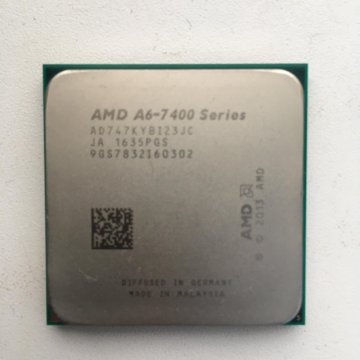 The FX-60 topped the group with a score of 5,803, while the X2 4800+ trailed just behind on 5,428. The Intel Extreme Edition 955 achieved a similar score of 5,412, and the single-core FX-57 brought up the rear with 4,431.
The FX-60 topped the group with a score of 5,803, while the X2 4800+ trailed just behind on 5,428. The Intel Extreme Edition 955 achieved a similar score of 5,412, and the single-core FX-57 brought up the rear with 4,431.
These results prove the FX-60 lives up to its billing as the ultimate desktop CPU. Not many people will be able to justify its asking price, and that being the case, we’d recommend you opt for the cheaper X2 4800+. However, if you want the absolute cream of the crop, the FX-60 is undoubtedly the CPU of choice.
We’ll be following up this review with future updates about the FX-60’s performance. It’s already proven its worth in everyday multitasking and productivity applications, but AMD says it will also begin to establish itself as the clear choice for gamers as games developers begin to exploit the potential of dual-core CPUs. We’ll also be reviewing complete retail PCs based on the FX-60 in the coming days. Stay tuned. -RR
AMD Athlon 64 FX-60 review
When you purchase through links on our site, we may earn an affiliate commission.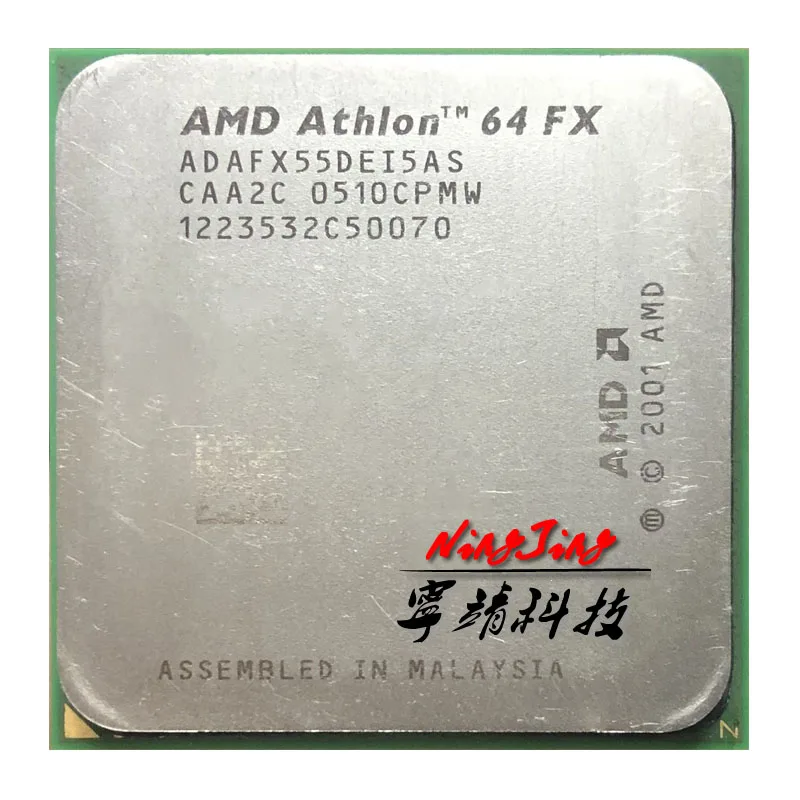 Here’s how it works.
Here’s how it works.
This processor is able to put in a stonking performance
Once the choice of gamer, AMD has slipped behind Intel
TechRadar Verdict
Technically Brilliant, financially flawed
TODAY’S BEST DEALS
Cons
- —
Intel’s Core 2 Duo
The price tag
Why you can trust TechRadar
Our expert reviewers spend hours testing and comparing products and services so you can choose the best for you. Find out more about how we test.
Processors keep getting faster and faster, it’s one of the huge computing clichés. The latest chip from AMD doesn’t deviate from this trend, although it’s still something of a surprise. AMD’s FX range was originally aimed at the ‘enthusiast’ market, alternatively known as the gamers-with-lots-of-spare-cash segment. Similar in scope to Intel’s Extreme Edition chips, AMD has, until now, stuck with single-core FX chips, because most games aren’t programmed with dual-core chips in mind.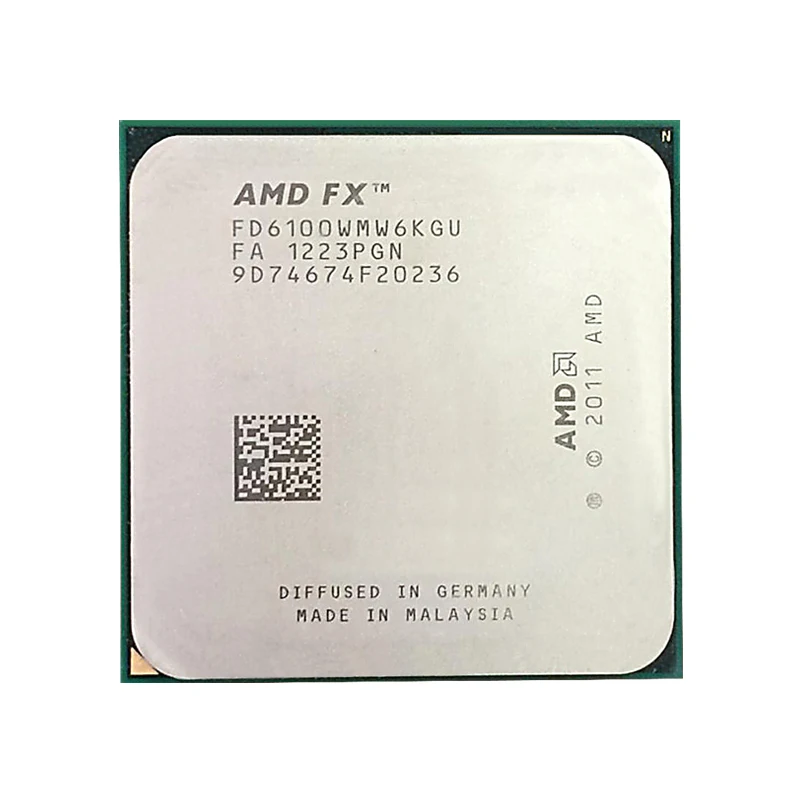
There’s obviously been a change of ethos for the FX-60, however, as the move to even numbers finally introduces the first dual-core FX chip. This change in scope means that comparisons to previous members of the FX range are difficult, because this is closer to a speed boost for the Athlon 64 X2 4800 than any single-core offering.
Indeed, apart from running at 2,600MHz as opposed to 2,400MHz, this is nearly identical to the 4800 . Each core has access to 128KB of Level 1 cache, split into 64KB of data and instruction caches, as well as 1MB of L2 cache for each core. It also supports 64-bit computing, SSE1, 2 and 3, Cool ‘n’ Quiet and 3DNow!
When it comes to tangible performance improvements, it depends on which chip the FX-60 is compared to. Relative to the last release from this range (the FX-57), the raw power on offer is phenomenal and almost doubles the Dhrystone results from SiSoftware Sandra 2005, from 12,034MIPS to 22,000MIPS, with a similar story in the floating point tests.
Figures, lots of figures
This is repeated in the benchmark’s multimedia test, managing a whopping 49,227it/s as opposed to 26,807. However, things are less impressive when compared to the Athlon 64 X2 4800 , which scores 20,603MIPS and 45,944it/s respectively and is a relatively minor improvement. Performance increases aside, this isn’t a chip worth rushing out and upgrading your whole platform to.
The imminent release of the M2 spin-off, the Athlon 64 that supports DDR2 memory, limits the upgrade path for the socket 939 format, because DDR2 requires a new socket. Even if you already have a socket 939 motherboard, the performance you’re getting for the price makes the likes of the Athlon 64 X2 4200 a much more interesting dual-core chip. Of course, if you do want the best performance and money really is no object, then this is a phenomenal slither of silicon. Alan Dexter
AMD Athlon 64 FX-60: Price Comparison
No price information
Check Amazon
powered by
Tech.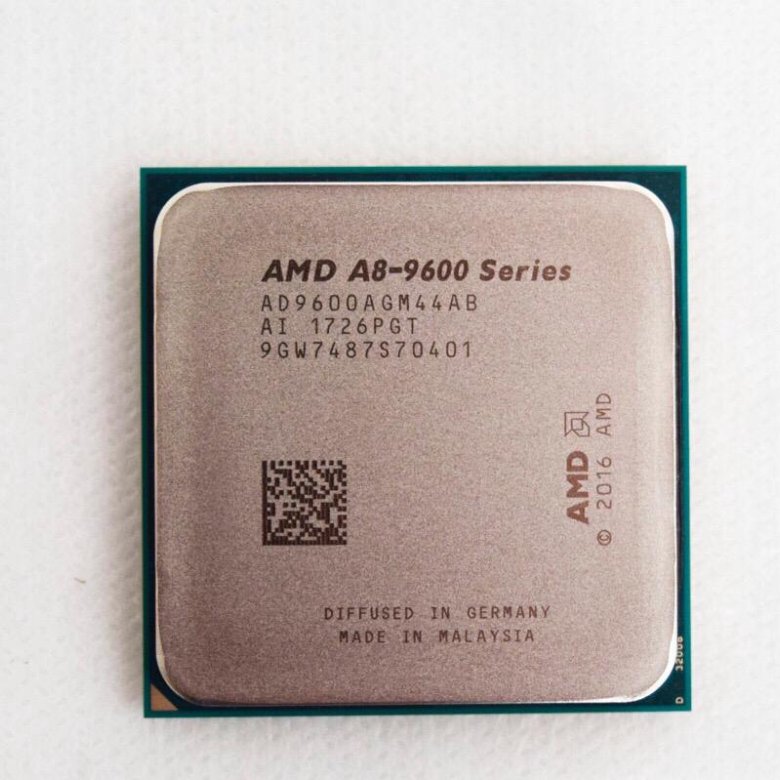 co.uk was the former name of TechRadar.com. Its staff were at the forefront of the digital publishing revolution, and spearheaded the move to bring consumer technology journalism to its natural home – online. Many of the current TechRadar staff started life a Tech.co.uk staff writer, covering everything from the emerging smartphone market to the evolving market of personal computers. Think of it as the building blocks of the TechRadar you love today.
co.uk was the former name of TechRadar.com. Its staff were at the forefront of the digital publishing revolution, and spearheaded the move to bring consumer technology journalism to its natural home – online. Many of the current TechRadar staff started life a Tech.co.uk staff writer, covering everything from the emerging smartphone market to the evolving market of personal computers. Think of it as the building blocks of the TechRadar you love today.
is a good processor… with a bad name
The times when users (and testers themselves) waited with bated breath for the release of each new Intel or AMD processor are long gone. The base of accumulated test results is already so large that the result of the new product, which differs from previous processors only in frequency, is quite predictable and approximately known in advance. Of course, sometimes you have to deal with something new: a new core, a previously unexplored amount of cache … but today’s case is not one of those.
The AMD Athlon 64 FX-60 processor released by AMD, despite its intriguing name, is just a higher-frequency version of our old friend — Athlon 64 X2 4800+. All the differences are in the frequency: the Athlon 64 X2 4800+ has two cores equipped with a 1 MB L2 cache running at 2400 MHz, while the new Athlon 64 FX-60 has exactly the same cores running at 2600 MHz. The number of transistors (about 233 million), the die area (about 199 sq. mm), maximum heat dissipation (110 W) — all these characteristics are the same for the Athlon 64 X2 4800+ and the new Athlon 64 FX-60. Which, in general, is not surprising, because almost all other characteristics coincide, except, as mentioned above, the frequency (but including the technical process — 90 nm). Apparently, it was possible to “shove” the FX-60 “into the skin of the X2 4800+” in terms of heat dissipation by lowering the power supply by 0.05 volts: the corresponding range for the X2 lies within 1.35–1.40 V, and for the FX-60 it is 1.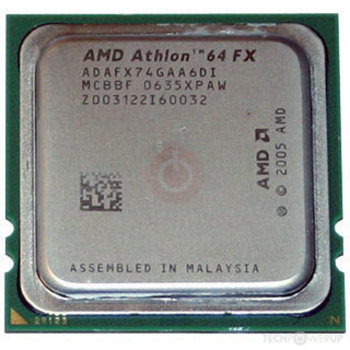 30–1.35 V.
30–1.35 V.
Thus, the new Athlon 64 FX occupies a rather strange place in the updated line of AMD processors of this series: in terms of the frequency of operation of a single core, it is equal to FX-55 (that is, is less than FX-57), but it has two such cores. Of course, the main goal of AMD is obvious: to “compensate” for the recent announcement of Intel Pentium XE 955. However, why the company decided (for the first time in the history of the line) to make the FX dual-core is not very clear. However, we will discuss AMD’s motivation and our conclusions from it in more detail in the final part of the article, now let’s get acquainted with the tests. Although we can warn you right away: you will not see anything surprising in the diagrams. Why — this has already been said above. Testing
Test bench configuration
- Processors
- AMD Athlon 64 FX-60 (2 x 1 MB L2, 2 x 2.6 GHz core)
- AMD Athlon 64 FX-57 (1 MB L2, 2.8 GHz core)
- AMD Athlon 64 FX-55 (1 MB L2, 2.
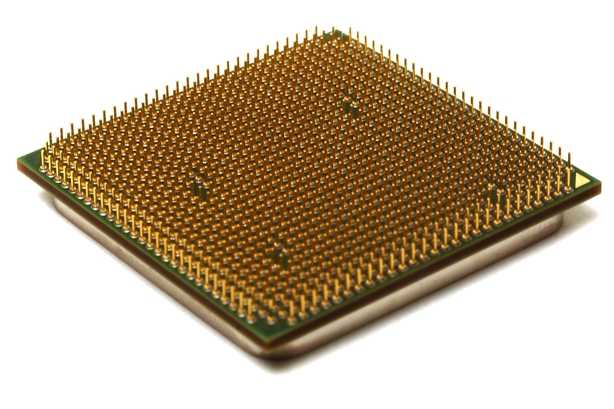 6 GHz core)
6 GHz core) - AMD Athlon 64 X2 4800+ (2 x 1 MB L2, 2 x 2.4 GHz core)
- Intel Pentium eXtreme Edition 955 (2 x 2 MB L2, 1066 MHz FSB, 2 x 3.46 GHz core)
- Intel Pentium eXtreme Edition 840 (2 x 1 MB L2, 800 MHz FSB, 2 x 3.2 GHz core)
- Intel Pentium 4 670 (2 MB L2, 800 MHz FSB, 3.8 GHz core)
- Intel Pentium 4 eXtreme Edition 3.73 GHz (2 MB L2, 1066 MHz FSB)
- Windows XP Professional SP2, DirectX 9.0c
- ATI CATALYST 5.4 (Display Driver 6.14.10.6525)
Test results
Recall that the diagrams with all the test results (64 in total) are placed on a separate page no comments, just «as is». The article shows only summary charts that combine the results of a whole group of tests into a certain average score. This approach allows, on the one hand, to satisfy the curiosity of especially inquisitive readers who object to the reduction in the number of test results given in the articles, and on the other hand,0063 make the «main» material less colorful and saturated with graphics.
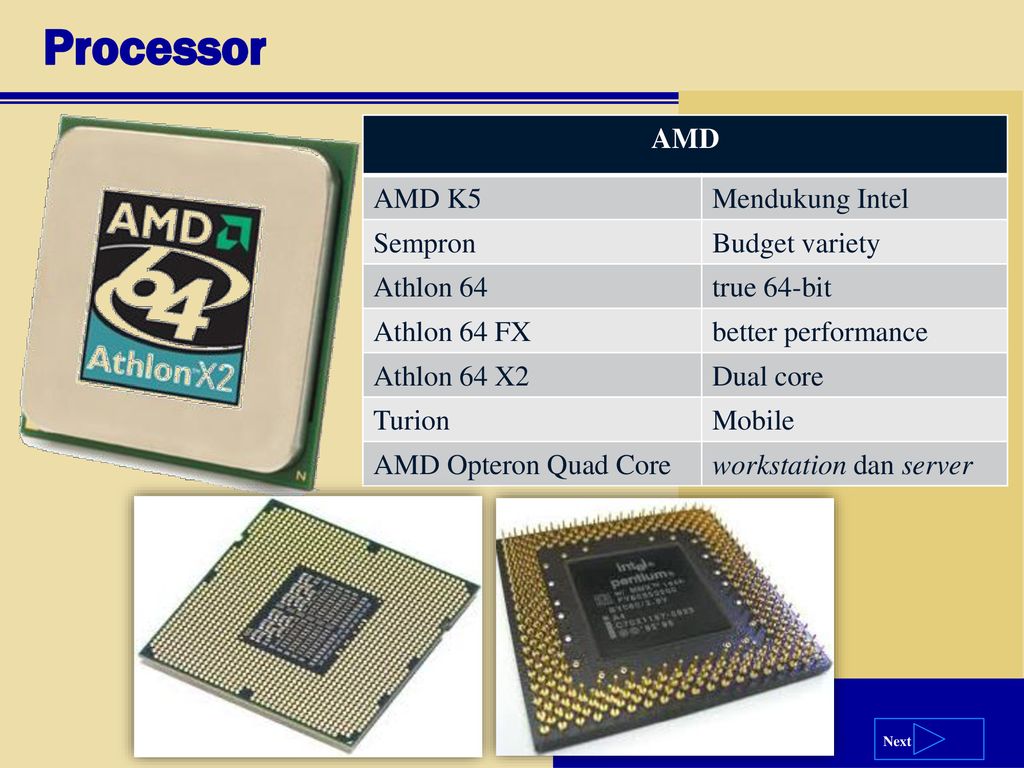
SPECapc for 3ds max 6 + 3ds max 7.0
Complete set of diagrams
We don’t see anything in this diagram that could «sell the Motherland» for. The Athlon 64 FX-60 quite predictably turns out to be faster than both the Athlon 64 X2 4800+ (due to the higher core frequency) and the Athlon 64 FX-57 (due to the fact that it has two cores, and not one, as in FX-57). It is also quite natural that the Athlon 64 X2 4800+ lags less than the FX-57: 3ds max has always had quite good optimization for SMP, especially in terms of rendering (and this is clearly seen in the detailed diagrams). On the whole, one can only rejoice for AMD, whose dual-core has reached a new frequency limit, but the diagram does not contain any revelations: something similar could be drawn with a felt-tip pen on a sheet of paper, knowing only the performance characteristics of the new processor. Losing Pentium XE 955 is also logical: it lost even Athlon 64 X2 4800+ in this test.
Maya 6.5
Complete set of diagrams
Logic and knowledge of software features and tests is our strength, and sometimes it can replace even the scrupulous diligence of testers who do not step a single step without launching a couple of benchmarks :).
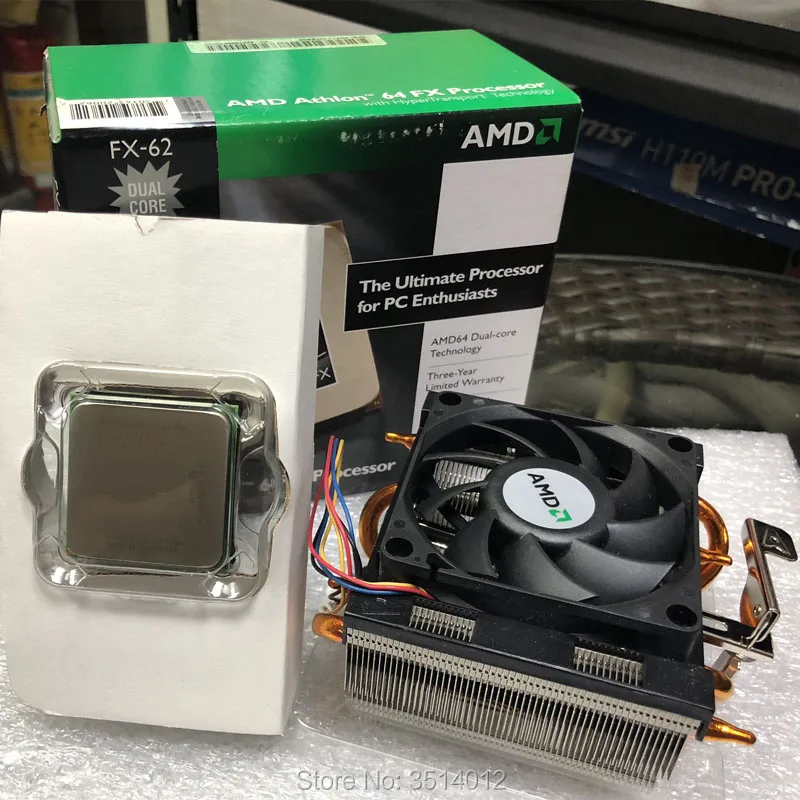 SPEC for Maya does not contain a rendering subtest, so in this benchmark, the FX-60 only slightly outperforms the FX-55 (perhaps due to SSE3 support and further optimization of the memory controller in the Toledo core), and the first place is occupied by the FX-57 — single-core, but highest in frequency. In a separate rendering test, everything is exactly the opposite: in favor of dual-core, FX-55/57 lag behind, and quite significantly. Attentive readers of the iXBT.com processor section knew all this before, we can only confirm that the test results coincide with the assumptions that could be made based on banal logic.
SPEC for Maya does not contain a rendering subtest, so in this benchmark, the FX-60 only slightly outperforms the FX-55 (perhaps due to SSE3 support and further optimization of the memory controller in the Toledo core), and the first place is occupied by the FX-57 — single-core, but highest in frequency. In a separate rendering test, everything is exactly the opposite: in favor of dual-core, FX-55/57 lag behind, and quite significantly. Attentive readers of the iXBT.com processor section knew all this before, we can only confirm that the test results coincide with the assumptions that could be made based on banal logic. We do not consider it necessary to comment on the results of the top Intel dual-core processor (Pentium XE 955) in those cases when it successfully loses even to the older Athlon 64 X2 4800+, since these comments will only be a variation of the ones already made, and thus only contributing to clogging of the material.
Lightwave 8.
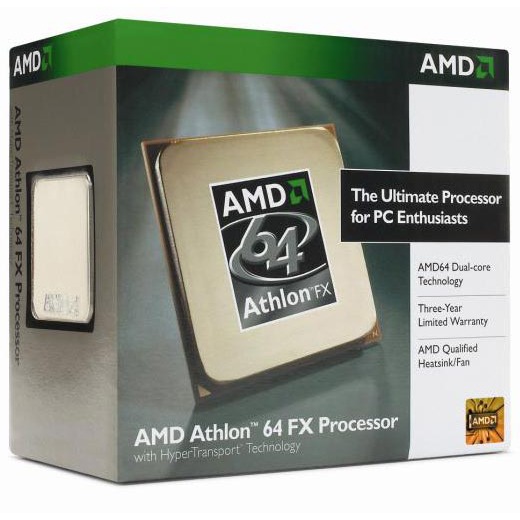 2 rendering
2 rendering
The situation is exactly the same as the rendering speed subtest in 3ds max (see detailed diagrams) and the rendering speed subtest in Maya. And this is not surprising.
SPECapc for SolidWorks 2003
Full set of diagrams
Still, sometimes the Athlon 64 FX-60 overtakes the FX-55 — even in those applications that are practically insensitive to dual-core (two-processor) functionality. We already mentioned two possible reasons above: SSE3 support and a newer, optimized and «tuned» memory controller. Recall that at the moment the Athlon 64 FX-55 is also released with SSE3 support and an optimized controller, just an older sample took part in our tests: AMD did not change the name of the CPU after transferring it to a newer core.
Adobe Photoshop CS (8)
Complete set of diagrams
As before, the distribution of places between Athlon 64 FX-57 and FX-60 depends on how well the application under test supports SMP. Adobe Photoshop from this point of view is not ideal, but even its capabilities are enough to bring the FX-60 to the fore.
 True, he lost one second to the top dual-core Intel, and therefore, purely formally, takes second place.
True, he lost one second to the top dual-core Intel, and therefore, purely formally, takes second place. Adobe Acrobat 6.0
The stable (albeit very small) advantage of multi-core CPUs over single-core ones in this test is still a mystery to us: there is no positive information about SMP support or any kind of multi-threaded optimization in Adobe Acrobat Distiller. However, it is clearly seen that the difference even between the best and worst results is not so significant.
«Universal» data compression (archiving)
Complete set of diagrams
High-frequency single-core processors, as always, finish first in WinRAR, and dual core CPUs in 7-Zip. The average score is often better for the latter, since the gain in frequency for dual-core CPUs is not so great, but the second core in 7-Zip gives a very tangible advantage. Ahead of everyone (as one would expect, keeping all of the above in mind) is the Athlon 64 FX-60.
Lossy media compression (MP3/MPEG2-4)
Full set of diagrams
dual cores are often ahead.
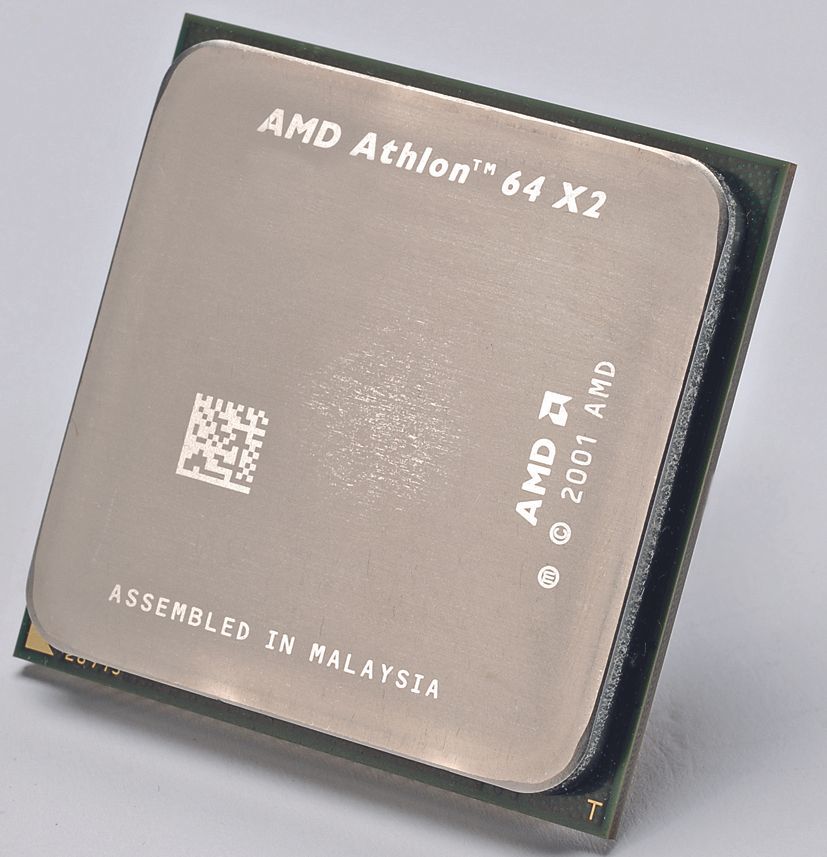 This testing, as it is easy to see, is no exception. Due to the results in LAME (see detailed diagrams), the Pentium XE 955 is the formal leader, but the actual (according to the results of all other tests) is either Athlon 64 FX-57 or FX-60.
This testing, as it is easy to see, is no exception. Due to the results in LAME (see detailed diagrams), the Pentium XE 955 is the formal leader, but the actual (according to the results of all other tests) is either Athlon 64 FX-57 or FX-60. CPU RightMark 2004B
Complete set of diagrams
Athlon 64 FX-60 sets a new performance record in CPU RM 2004, and even Pentium XE 955 is difficult to compete with it…
3
Far Cry
Painkiller
Unreal Tournament 2004
Total game score
Complete set of charts
SPEC viewperf
Full set of diagrams
On average in games and in the SPEC viewperf test, the new FX-60 quite naturally loses to the FX-57. Due to the fact that these programs are not able to use the second core, and the frequency of a single core in Athlon 64 FX-57 is higher. And this, in general, is not at all encouraging, since it is precisely «extreme gamers» that are the main target group for processors with the Athlon 64 FX brand.
 Now gamers will have to take into account the fact that «not all FX are created equal», and a higher model number does not always mean more speed in their favorite applications. Conclusion
Now gamers will have to take into account the fact that «not all FX are created equal», and a higher model number does not always mean more speed in their favorite applications. Conclusion The processor turned out to be completely predictable (as, indeed, the vast majority of recently released Intel and AMD CPUs). Knowing the technical characteristics, the tests could not even be carried out: with a spread of +/- 3-4%, their results could be obtained using a banal extrapolation of the existing ones. That, however, does not in the least detract from the merits of AMD engineers, who managed to put two cores operating at a frequency of 2600 MHz into one case. In a word, from a purely technical point of view, there are no complaints about the product, only praise. Competitiveness is also excellent: if the Athlon 64 X2 4800+ is next to the Pentium XE 955 looked only like a «winner on points», the Athlon 64 FX-60 can already be called an almost unconditional winner. But from a consumer point of view .
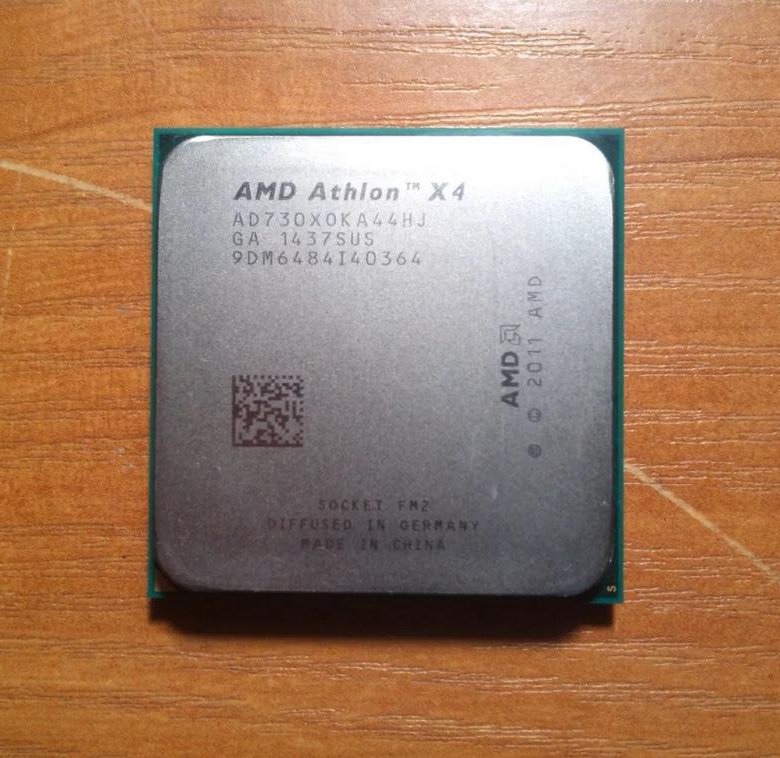 .. worse. For some reason, a fly in the ointment was added to the barrel of honey, although it was quite possible to do without it. Of course, this is only our subjective point of view, however…
.. worse. For some reason, a fly in the ointment was added to the barrel of honey, although it was quite possible to do without it. Of course, this is only our subjective point of view, however… Since its inception, Athlon 64 FX has been associated with the maximum clock mastered by the manufacturer at the moment, which made it an ideal choice not so much for professionals as for gamers. Professionals took workstations on Opteron (with two or more processors), and recently they have an alternative in the form of dual-core Athlon 64 X2. This was fully in line with AMD’s official positioning strategy, and the positioning itself was logical and transparent. And then — Athlon 64 FX-60. A processor containing two cores (which does not make any sense for games at the moment), with the maximum model number in the FX series … but by no means the maximum frequency!
Why the Athlon 64 FX-60 turned out exactly the way it turned out is very easy to understand: not ready. Judging by the price of the Athlon 64 FX-57, the yield of chips capable of operating even at 2.
 8 GHz is still low.
8 GHz is still low. - It’s no secret that not so long ago Intel announced the Pentium eXtreme Edition 955. It needed something to oppose, and it is desirable that the processor from Intel with the «XE» brand was opposed by the processor from AMD with the same meaning as the brand «FX «.
-
“The transaction was rezynoye”, the structure of Rosatoma has gained control over the developer of the Elbrus processors
February 2023
-
Is this really an enthusiast processor? Xeon W7-2495X loses to Core i9-13900K in Geekbench
February 10, 2023
-
One of the most unusual motherboards.
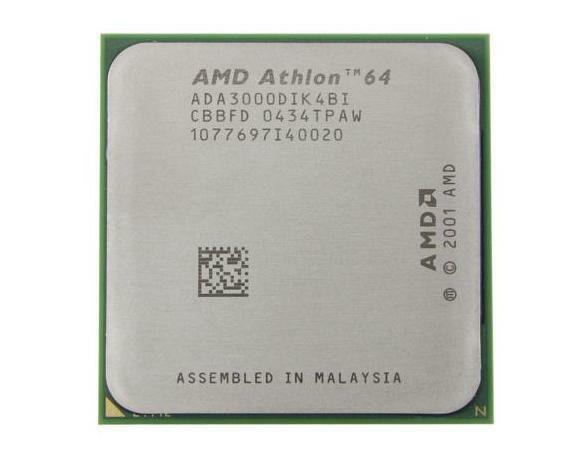 The Asus X670 Mini-ITX has one of the chipset chips located on a hidden separate board
The Asus X670 Mini-ITX has one of the chipset chips located on a hidden separate board February 9, 2023
However, these are all explanations from the series “because it is more convenient for us (AMD marketing)”. And what about us, users and buyers? Why was it for the sake of one «red day of the calendar», for the sake of a momentary, and, in general, not such an important goal, and so being at the top of its achievements, and almost everywhere overtaking a competitor, to break its own lineup, coupled with the strategy of positioning processor brands ? Why not name the ill-fated FX-60, for example, «Athlon 64 X2 5200+», which would immediately make it an order of magnitude «clearer»? Why, in the end, not make a new brand for dual-core «extremals» (for example, «Athlon 64 FX2»)? All in all, a strange move.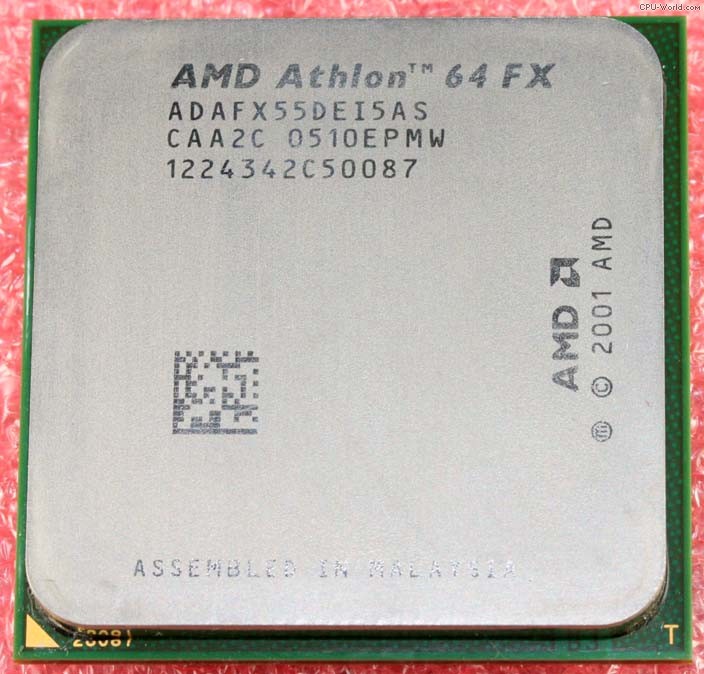 Weird, and somewhat ridiculous even in the long run.
Weird, and somewhat ridiculous even in the long run.
Perhaps this is the only complaint we have about the Athlon 64 FX-60: it’s just not the right name, .
It is unlikely that this will greatly affect the success of this CPU and its sales, but lately it is too free that Intel and AMD treat their own products in terms of their positioning. There is an impression that in the lineups of both companies, already quite confusing, more and more confusion is deliberately introduced in order to completely confuse the buyer. We cannot welcome this in any way …
January 10, 2006
Stanislav Garmatyuk
News
News section >
Athlon 64 FX-60 review on Fcenter.ru
Today, the post-holiday apathy of everyday life should be dispelled by the announcement of the dual-core processor Athlon 64 FX-60, operating at a frequency of 2.6 GHz. There are still a few minutes left before the NDA is removed from the test results, but for now we can operate with preliminary overclocking statistics. As we have already reported, the share of processors overclocking to 3.0 GHz
not so great — at least when it comes to the use of air cooling systems. In addition, this processor suffers from a «cold bug», which does not allow it to be effectively overclocked when using liquid nitrogen and «freons».
As a mandatory review of the Athlon 64 FX-60, we, according to the already established tradition, offer you the work Gavric ‘a, published on the site Fcenter.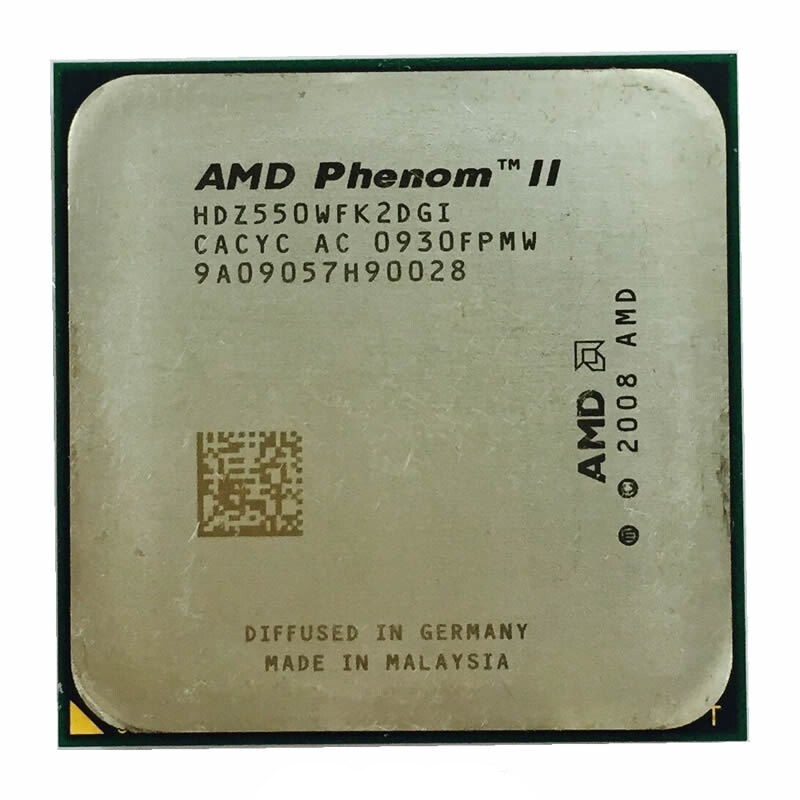 ru. As the author rightly noted, the release of the dual-core Athlon 64 FX-60 processor was AMD’s answer to the release of the Pentium XE 955 processor, which restored the status quo, that is, confirmed AMD’s leadership in the test categories popular among gamers and benchmarks. It’s just that dual-core processors are now the leaders, and drivers and applications are hastily optimized by developers for multithreading. Processor Pentium XE 955 in such a situation resembles a centipede tangled in its own legs, because Hyper-Threading technology in some cases harms performance, and not good.
ru. As the author rightly noted, the release of the dual-core Athlon 64 FX-60 processor was AMD’s answer to the release of the Pentium XE 955 processor, which restored the status quo, that is, confirmed AMD’s leadership in the test categories popular among gamers and benchmarks. It’s just that dual-core processors are now the leaders, and drivers and applications are hastily optimized by developers for multithreading. Processor Pentium XE 955 in such a situation resembles a centipede tangled in its own legs, because Hyper-Threading technology in some cases harms performance, and not good.
There is almost no difference between the Athlon 64 FX-60 processor and its predecessors — it is based on the same 0.09 µm E6 stepping Toledo core as the dual-core Athlon 64 X2 processors. It differs from them only in a lower supply voltage (1.3-1.35 V versus 1.35-1.4 V), the presence of a free multiplier and a more thorough approach to selection by frequency potential. In addition, the Athlon 64 FX-60 demonstrates a new level of AMD’s appetite for pricing: for the first time, AMD’s flagship processor ($1,031) costs more than its competitor from Intel ($9). 99).
99).
The Athlon 64 FX-60 processor supports Cool’n’Quiet technology — synchronously for both cores. In idle mode, the frequency drops to 1.2 GHz, the voltage — to 1.1 V. In this state, the processor consumes no more than 8.5 W, which is unattainable for the Pentium XE 955, which does not yet support C1E, and EIST will not support even after upgrading the Presler core.
Under load, the Athlon 64 FX-60 barely fits within the established limits (TDP = 110 W), but remains a more economical processor compared to older single-core Intel models. Our colleagues managed to overclock the processor to 2.9GHz is not the worst, but not the best result either. As rightly noted, the Pentium XE 955 processor demonstrates an important advantage — a good overclocking potential provided by the new 0.065 micron technical process, while the Athlon 64 FX-60 has to be content with the potential of the old 0.09 micron technical process. However, this does not prevent him from maintaining leadership positions in many tests.
